Running ASPRunner.NET and PHPRunner apps on Microsoft Azure
ASP.NET, PHP, PHP Code Generator, TutorialsIn this article we’ll show how to deploy PHPRunner or ASPRunner.NET application to Microsoft Azure cloud. I assume you already have an account with Azure, if not, you can create one here.
1. Create new application
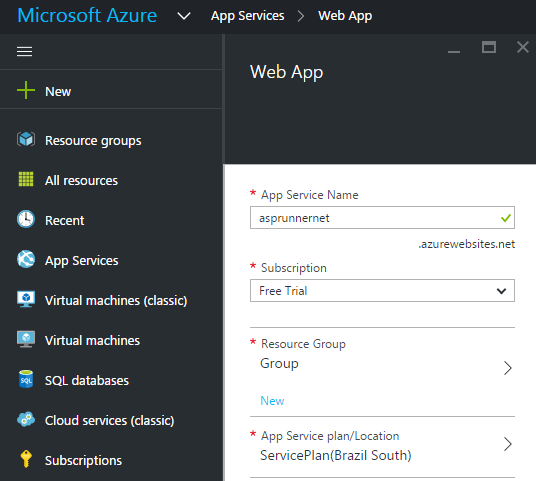
2. Application settings
Under Tools->Applications settings you can leave default settings that such as .NET Framework 4.6 and PHP 5.4
3. Test application
At this moment you should be able to open your application URL like this one in web browser: http://asprunnernetproject1.azurewebsites.net/
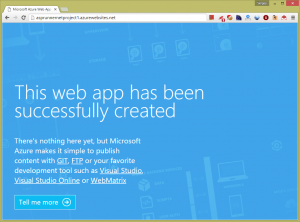
4. Deployment settings
Now we need to upload our PHPRunner or ASPRunner.NET application to Azure. For simplicity sake we will use FTP upload. Proceed to
Tools->Deployment credentials, enter FTP username/password.
You can upload your application using built-in FTP upload tool or use any third party FTP software. Make sure you upload all files and folders under output directory, including empty folders.
Here are sample settings for ASPRunner.NET or PHPRunner.
FTP server: ftp://waws-prod-cq1-005.ftp.azurewebsites.windows.net
Username: asprunnernetproject1\asprunnernetsergey
Password: ******
Upload folder: /site/wwwroot
URL: http://asprunnernetproject1.azurewebsites.net/
Once uploaded open your application URL in web browser again and it should work at this point
5. SQL Server database
If you use a database like MS Access or your own SQL Server/MySQL/Postgre server your job is done here and application is ready to go. You can also take it one step further and make your application use SQL Server provided by Azure.
To create a new SQL Server database proceed to ‘SQL databases’ and click ‘Add’.
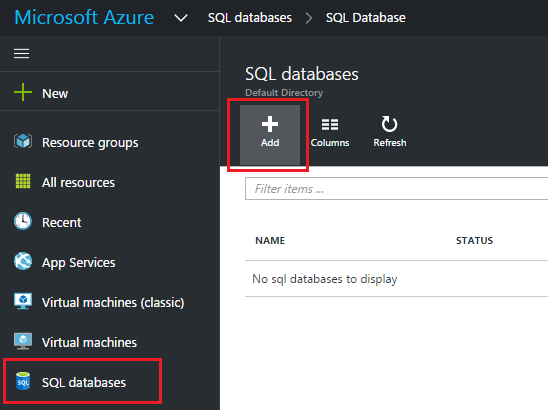
Enter server name, database name, create database user. For test we chose to start with sample database, you may want to start with a blank database and upload your own data after that.
Here are sample connection settings to be used to PHPRunner/ASPRunner.NET.
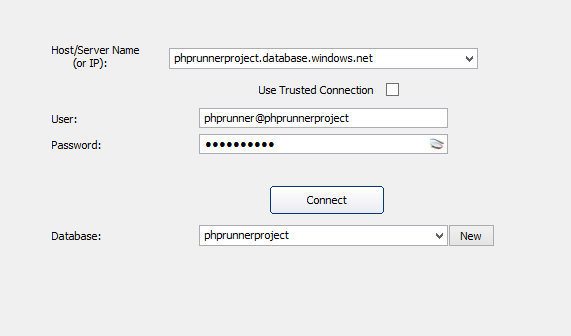
Note that if you try to connect right now you will get the following error message.
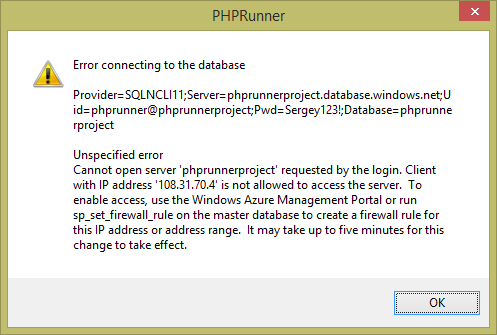
By default remote connections are not allowed. Luckily the error message itself tells us what we need to do. We need to proceed to our database in Azure control panel, click ‘Open in Visual Studio’ and add a firewall rule allowing connections from our IP address. Luckily, Azure shows your IP address right there and you don’t need to guess it.
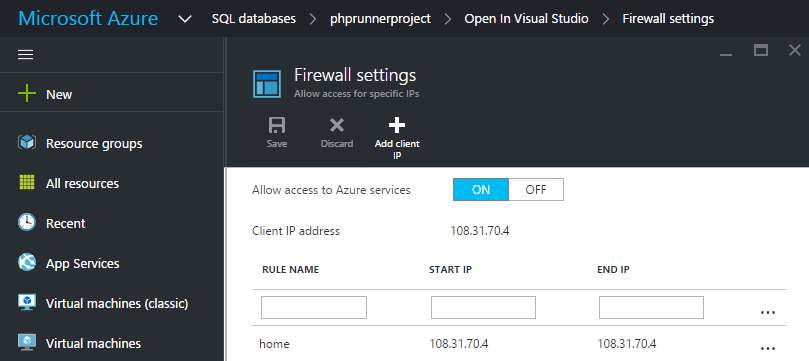
Now you can connect to your database hosted on Azure from PHPRunner or ASPRunner.NET.
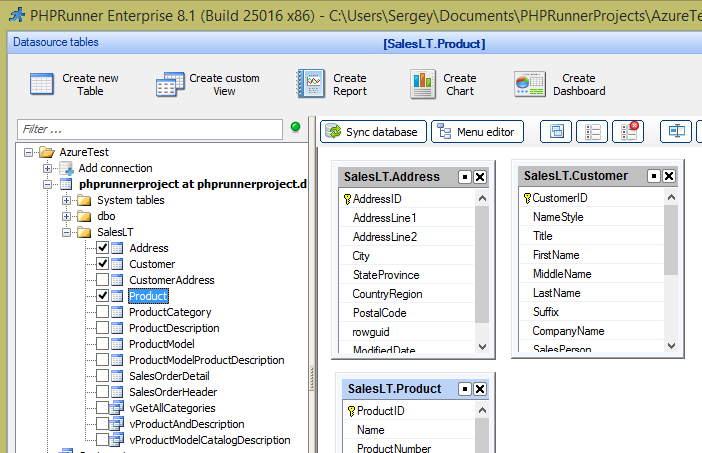
6. MySQL database
Similar steps will be required to create and configure a MySQL database. Instead of ‘SQL Databases’ you will need to go to Marketplace and choose MySQL database (ClearDB) there.
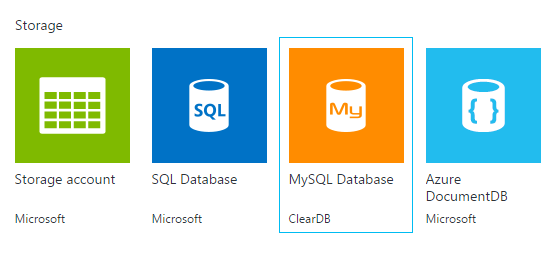
This is what you need to know to get started with Windows Azure and PHPRunner/ASPRunner.NET. Happy cloud computing!
Works great but can we use Azure Active Directory for security? If so then how?
I guess you can use the same way you use any other AD. Did you try it already? Any error messages?
Are you connecting to Azure Databases from an Azure Virtual Server? Where is the instance of ASPRUNNER.net running?
@Aaron Lacher
Application is uploaded to Azure account, no Virtual Server is required.
Where does the instance of asprunner .net reside? On a virtual server on the Azure Cloud or in a local machine or virtual machine (not on the Azure Cloud)?
Hi, Is there a way to store files in a Azure Blod Storage from PHPRunner File/Image field? How or what is the correct way to configure the Blob Storage connection string in the control?
Hello Richard, After a deep dive, I found the correct method to store files using normal path access in an Azure App Service hosted aspnetrunner app. User must use D:\home as the path. This is the path that Microsoft has allowed web apps to write to, by default, if using Azure App Service. I do not know another way to change this but it is their built in solution.